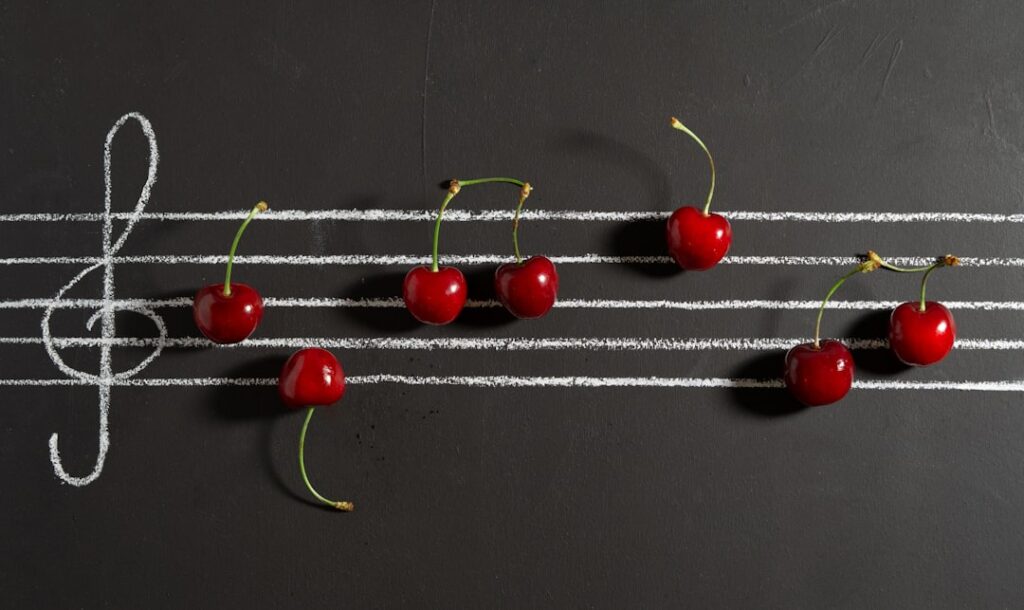
New to teaching music theory for beginners? This guide will help you simplify key concepts and build confidence from day one.
Teaching music theory to absolute beginners can feel like trying to explain quantum physics to a kindergartener. Where do you even start? How do you make abstract concepts concrete? And most importantly, how do you avoid overwhelming your students before they’ve even begun?
After years of working with beginning students, I’ve discovered that the secret isn’t what you teach first—it’s what you don’t teach first. The most successful music theory educators understand that building a strong foundation requires patience, creativity, and a complete rethinking of traditional approaches.
The Cardinal Sin: What NOT to Do on Lesson One
Let’s address the elephant in the room: never, ever start with key signatures.
I’ve seen countless well-intentioned teachers dive straight into the circle of fifths, expecting beginners to memorize sharps and flats before they even understand what a note is. This approach is like teaching someone to run before they can walk—it’s overwhelming, abstract, and guaranteed to crush enthusiasm.
Other common first-lesson mistakes include:
Starting with complex rhythm patterns. Your student doesn’t need to understand dotted eighth notes when they’re still figuring out what a quarter note looks like.
Overwhelming with terminology. Terms like “enharmonic equivalents” and “augmented fourths” can wait. Way, way later.
Assuming prior knowledge. Never assume students know what “high” and “low” mean in musical terms, or that they understand the relationship between written music and sound.
Focusing on rules instead of music. Theory should always serve music, not the other way around. If your first lesson feels more like a grammar class than a music exploration, you’re doing it wrong.
Instead, your first lesson should feel like opening a door to a fascinating new world—not like being handed a textbook and told to memorize it.
Building Blocks: The Right Way to Start
Understanding Clefs Through Storytelling
Clefs are often the first stumbling block for beginners, but they don’t have to be. Instead of launching into a dry explanation about “the treble clef indicates that the second line represents G,” try this approach:
Tell a story. The treble clef is like a house for higher-pitched sounds—think of birds singing in the treetops. The bass clef is like a basement where the deeper, rumbling sounds live—like elephants walking or thunder rolling. These aren’t just random symbols; they’re address markers that tell us where different types of sounds live on the staff.
Make it visual. Draw the clefs as characters. The treble clef looks like a fancy spiral staircase leading upward. The bass clef resembles a backward C with two dots—like eyes looking back at all the low notes it’s responsible for.
Connect to their experience. Ask students to sing or hum along to a familiar song, then help them identify when they’re singing in their “treble clef voice” (higher, lighter) versus their “bass clef voice” (lower, more resonant).
Demystifying Note Values
Rhythm is mathematical, but beginners don’t need to know that yet. Instead, think of note values as a family:
The whole note is the grandparent—slow, steady, and takes up lots of space (four beats).
Half notes are the parents—they move at a reasonable pace (two beats each).
Quarter notes are the teenagers—energetic and always on the move (one beat each).
Eighth notes are the little kids—they come in pairs, move quickly, and need to hold hands (half a beat each).
This family metaphor helps students understand relationships without getting bogged down in mathematical fractions. You can even have them clap different note values while imagining the different family members walking at their characteristic speeds.
Steps and Intervals Made Simple
Intervals are just musical distances, but the term “interval” itself can be intimidating. Instead, start with concepts they already understand:
Use physical movement. Have students walk up and down actual stairs while playing scales. One step up in music is like one step up on the staircase. Sometimes we skip steps (intervals larger than a second), and sometimes we go up many steps at once (larger leaps).
Relate to familiar songs. “Happy Birthday” starts with a step up, then a step down. “Somewhere Over the Rainbow” begins with a giant leap up—like jumping over several stairs at once.
Make it visual with hand gestures. Small movements for steps, big movements for leaps. Students can literally see and feel the difference.
The Power of Visuals, Stories, and Metaphors
Visual Learning Strategies
Color coding is your friend. Assign colors to different note names, chord types, or time signatures. Visual learners will thank you, and it makes abstract concepts more concrete.
Use everyday objects. Piano keys can be represented by black and white tiles. The staff can be compared to a ladder or fence. Rhythm can be visualized through different sized shapes or even food items (whole pizza = whole note, pizza slice = quarter note).
Create mind maps and diagrams. Show relationships between concepts visually rather than just explaining them verbally.
Storytelling Techniques
Give musical elements personalities. The note C is the reliable friend who’s always there when you need them. F# is the dramatic one who always demands attention. This makes note relationships memorable and fun.
Create musical adventures. “Today we’re going on a journey up the C major scale mountain. We’ll visit each note village along the way and learn what makes each one special.”
Use familiar narratives. Frame lessons around stories students already know. The three little pigs can teach about three different time signatures, each building a house with different rhythmic patterns.
Effective Metaphors
Music theory as a language. Notes are like letters, measures are like words, phrases are like sentences. This helps students understand that music has grammar and structure, just like speech.
The orchestra as a community. Different instruments have different jobs, just like people in a neighborhood. Some provide the foundation (rhythm section), others carry the melody (leads), and some add color and texture (supporting voices).
Scales as emotional colors. Major scales are like sunny days—bright and cheerful. Minor scales are like cloudy days—more somber and introspective. This connects theory to feeling, which is ultimately what music is about.
A Sample Beginner Lesson Structure
Here’s how a successful first music theory lesson might unfold:
Opening (5 minutes): Sound Exploration
Begin by having students explore high and low sounds with their voice, hands, or simple instruments. No notation yet—just pure sound exploration.
Introduction to the Staff (10 minutes): The Musical Ladder
Introduce the staff as a musical ladder where higher notes live higher up, and lower notes live lower down. Draw it large, use fun colors, and have students point to where they think different sounds would live.
Meet the Treble Clef (10 minutes): The High Note Guardian
Introduce the treble clef as a character who watches over all the higher notes. Practice drawing it while telling its story. No line-by-line memorization yet—just familiarity.
Note Values Family Time (10 minutes): The Musical Family
Introduce the note values family with their personalities and walking speeds. Have students clap and move to different note values.
Hands-On Activity (10 minutes): Building Our First Song
Using only three notes (maybe C, D, E), help students create simple patterns using quarter notes. Let them experiment and play.
Wrap-Up (5 minutes): What We Discovered
Review the new “friends” they met today: the staff, treble clef, and the note family. Assign a simple, fun practice activity.
Notice what’s missing from this lesson: key signatures, complex rhythms, extensive terminology, and overwhelming amounts of information. Instead, we’re building curiosity, confidence, and a foundation for future learning.
Common Pitfalls and How to Avoid Them
Moving Too Fast
The Problem: Rushing through concepts because you’re excited to get to the “real” music theory. The Solution: Remember that every expert was once a beginner. Solid foundations take time to build.
Using Too Much Jargon
The Problem: Assuming students will pick up terminology naturally. The Solution: Introduce new terms gradually and always connect them to concepts students already understand.
Forgetting the “Why”
The Problem: Teaching theory as an isolated academic subject. The Solution: Always connect theory back to actual music. Play examples, sing songs, and show how theory serves musical expression.
One-Size-Fits-All Teaching
The Problem: Using the same approach for every student. The Solution: Pay attention to how different students learn. Some need more visual aids, others learn better through movement, and some prefer logical explanations.
Building Long-Term Success
Creating Positive Associations
Your goal in those crucial first lessons is to create positive associations with music theory. Students should leave feeling curious and excited, not overwhelmed and confused. Every small success should be celebrated.
Connecting Theory to Practice
Always, always connect theoretical concepts to actual music-making. If you’re teaching about quarter notes, have students clap them. If you’re explaining scales, play them and sing them. Theory should never exist in a vacuum.
Encouraging Questions
Create an environment where questions are welcomed and celebrated. “I don’t know, but let’s figure it out together” is often a better response than a complicated explanation that goes over their heads.
Making It Relevant
Connect music theory to songs and artists your students already love. Show them how their favorite pop song uses the same chord progression they’re learning, or how that catchy rhythm follows the patterns you’ve been practicing.
The Bigger Picture
Remember that teaching music theory to beginners isn’t really about music theory at all—it’s about opening doors to musical understanding and expression. Your job isn’t to create theory experts overnight; it’s to provide tools that will serve students throughout their musical journey.
The most successful music theory teachers understand that their subject is not the destination—it’s the vehicle that helps students reach their musical goals. Whether those goals involve performing, composing, or simply understanding music more deeply, theory should always be presented as a helpful friend, not an intimidating obstacle.
When you approach music theory education with patience, creativity, and genuine enthusiasm for helping students discover the logic and beauty behind music, you’re not just teaching concepts—you’re nurturing lifelong musical learners. And that’s a gift that will resonate far beyond any single lesson or concept.
Start simple, stay curious, and remember that every musical journey begins with a single note. Your job is to make sure that first note sounds like the beginning of something wonderful.
Ready to transform your music theory teaching? Remember: the secret isn’t in complex explanations or advanced concepts—it’s in making the fundamental building blocks so clear and engaging that students can’t wait to build something beautiful with them.
Related Posts:
Teaching Music Theory Without a Textbook: Creative Music Education
From Reading Notes to Hearing Them: Building Inner Hearing in Young Musicians
Beginner Music Composition: How to Compose Your First Melody
Special Needs Music Resources: Making Concepts Accessible for All Learners
Understanding Accidentals Music Theory: Your Complete Guide to Sharps and
Enhancing Music Skills With Half Steps: Introduction for Beginners
Learn to Read Notes: Mastering Pitches in Treble and Bass Clef – MusePrep
Back to School 2025: Music Theory Back to School Essentials (That Actually
Pin for Later:

Leave a Reply